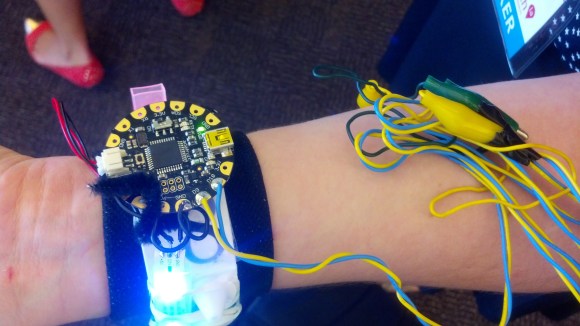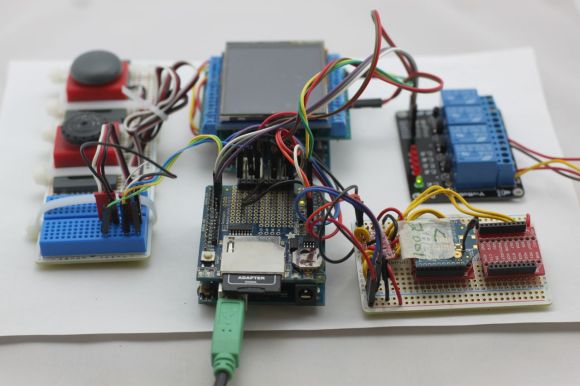
[Bill Meara] has finished his latest project, a Moxon antenna for HF on 17 meters. [Bill] is well-known here on Hackaday. When not building awesome radios, he can be found ranting about ham radio. His new antenna turned out to be a true hack. He even used a hacksaw to build it!
The Moxon antenna is named for the late [Les Moxon, G6XN] who first described it in “Two-Element Driven Arrays”, a QST magazine article published in July of 1952. [Bill] built his Moxon loosely based on [Jim/AE6AC’s] excellent instructions. The design is incredibly simple – a two element directional antenna using crappie fishing poles as spreaders. That’s crappie as in the fish, not the quality of the pole. Crappie poles are typically made up of telescoping sections of graphite or fiberglass in common lengths of 14, 16, and 20 feet. The poles can be bought for under $20 at sporting goods stores. [Bill] used 16 foot poles purchased from Amazon.
The antenna is created by connecting all four poles at their bases in an X shape. The wire elements are stretched across the ends of the poles. The entire antenna bends up as the stiff poles hold the driven and reflector elements in tension. [Bill] used some scrap wood and U-bolts to attach the fishing poles, and bungee cord ends at the tips. Since the antenna is directional, [Bill] added a TV antenna rotor to spin the beam around. The antenna is so light that one could get by with a couple of cords and the “Armstrong method” of antenna rotation.
Once up on the roof, [Bill] found his antenna really performed. He was easily able to cross the Atlantic from his Northern Virginia home to France, Belgium, and Latvia. The mostly horizontal antenna makes it a bit more unobtrusive than other directional designs. [Bill] mentions that his neighbors haven’t revolted yet, so he’s continuing to enjoy the fruits of his antenna labors.




 How long have you been making do with a hacked together power supply?
How long have you been making do with a hacked together power supply?











